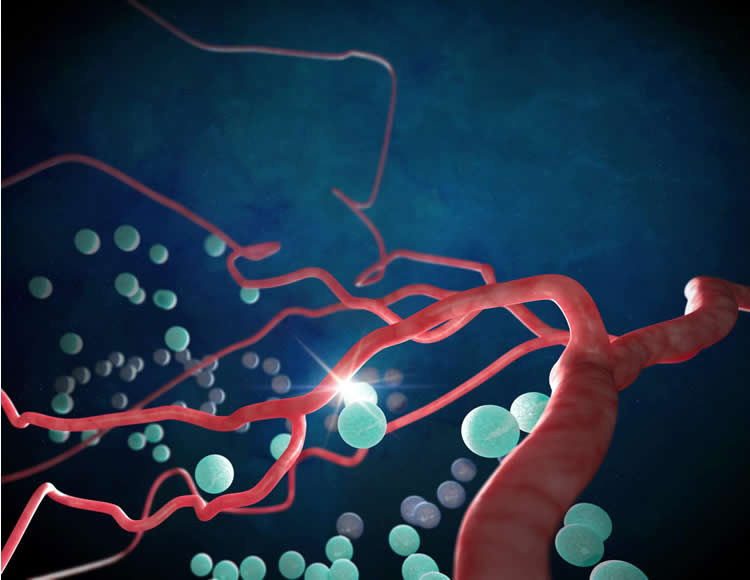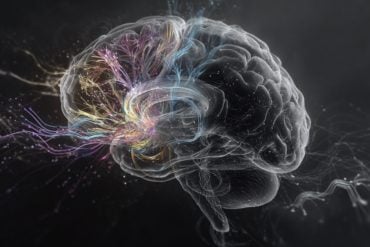Summary: According to a new study, during sensory stimulation, increases of blood flow are not precisely tuned to local neural activity, and this can have implications for fMRI neuroimaging.
Source: Medical University of South Carolina.
In an article published online ahead of print on May 25, 2016 in Nature, investigators at the Medical University of South Carolina (MUSC) report that, during sensory stimulation, increases in blood flow are not precisely “tuned” to local neural activity, challenging the long-held view that vascular and local neural responses are tightly coupled.
Many brain-imaging techniques that rely on changes in the flow and oxygenation of blood, including functional magnetic resonance imaging (fMRI), assume that vascular changes reflect a proportional change in local neural activity.
“Because there isn’t enough blood to send everywhere in the brain at the same time with the optimal levels of oxygen and glucose needed to support neural activity, it is widely accepted that the brain has a built-in auto-regulatory mechanism for increasing blood flow to regions with increased activity,” says Prakash Kara, Ph.D., Associate Professor in the Department of Neurosciences at MUSC and senior author on the Nature article.
But how precise is this auto-regulation? With resolution typically at about one millimeter, the fMRI signal represents the blood flow averaged across many blood vessels. Using micron-scale resolution two-photon imaging in an animal model, the MUSC team studied blood flow in single vessels simultaneously with neural activity.
In higher mammals, the neurons in the visual cortex are organized into columns, each of which specializes in responding to a specific stimulus orientation. For example, neurons responding to a “horizontal” stimulus reside in one column and those to “vertical” in another. When the specialized neurons in one of these columns respond to a horizontal stimulus, for example, it would be expected that the blood vessels in the vicinity would likewise respond by dilating and increasing blood flow locally if vascular and neural responses are indeed congruent.
Instead, Kara and colleagues showed that, while blood flow did increase with neural activity, it also increased in response to certain sensory stimuli that did not evoke local neural activity.
To account for this “surplus dilation” and the resultant increase in blood flow, Kara and colleagues have devised a hypothesis. “The blood vessel dilation triggered by local, selective neural activity does not remain entirely local,” says Kara. “From a vessel deep within the brain, the dilation propagates up along the vessel walls into a surface vessel and then down into other vessels that enter neighboring columns.”

Thus, there appears to be no tight correlation between blood flow and local neural activity, and so hemodynamic imaging techniques such as fMRI may only reveal a “blurred” representation of the underlying neural activity.
The news for fMRI could then be mixed. The good news is that the strongest vascular response matched the strongest nearby neural activity, suggesting that fMRI has much to tell us about the general function of an area of the brain. The bad news is that precisely mapping neuronal circuitry could be forever out of fMRI’s reach.
But Kara cautions that much more work is needed, particularly on the generalization of this principle of “surplus dilation” and blood flow occurring in response to other forms of sensory stimuli. “Our team has just taken the first step, albeit an important one, in untangling the spatial precision of neurovascular coupling using very high-resolution imaging,” says Kara.
Funding: The study was supported by funds from the National Institutes of Health, National Science Foundation, Whitehall Foundation, and Dana Foundation.
Source: Heather Woolwine – Medical University of South Carolina
Image Source: This NeuroscienceNews.com image is credited to Emma Vought of the Medical University of South Carolina.
Original Research: Abstract for “Neural correlates of single-vessel haemodynamic responses in vivo” by Philip O’Herron, Pratik Y. Chhatbar, Manuel Levy, Zhiming Shen, Adrien E. Schramm, Zhongyang Lu and Prakash Kara in Nature. Published online May 25 2016 doi:10.1038/nature17965
[cbtabs][cbtab title=”MLA”]Medical University of South Carolina. “Mismatch of Vascular and Neural Responses Suggests Limits of FMRI.” NeuroscienceNews. NeuroscienceNews, 25 May 2016.
<https://neurosciencenews.com/fmri-neuroimaging-limits-4299/>.[/cbtab][cbtab title=”APA”]Medical University of South Carolina. (2016, May 25). Mismatch of Vascular and Neural Responses Suggests Limits of FMRI. NeuroscienceNews. Retrieved May 25, 2016 from https://neurosciencenews.com/fmri-neuroimaging-limits-4299/[/cbtab][cbtab title=”Chicago”]Medical University of South Carolina. “Mismatch of Vascular and Neural Responses Suggests Limits of FMRI.” https://neurosciencenews.com/fmri-neuroimaging-limits-4299/ (accessed May 25, 2016).[/cbtab][/cbtabs]
Abstract
Neural correlates of single-vessel haemodynamic responses in vivo
Neural activation increases blood flow locally. This vascular signal is used by functional imaging techniques to infer the location and strength of neural activity. However, the precise spatial scale over which neural and vascular signals are correlated is unknown. Furthermore, the relative role of synaptic and spiking activity in driving haemodynamic signals is controversial. Previous studies recorded local field potentials as a measure of synaptic activity together with spiking activity and low-resolution haemodynamic imaging. Here we used two-photon microscopy to measure sensory-evoked responses of individual blood vessels (dilation, blood velocity) while imaging synaptic and spiking activity in the surrounding tissue using fluorescent glutamate and calcium sensors. In cat primary visual cortex, where neurons are clustered by their preference for stimulus orientation, we discovered new maps for excitatory synaptic activity, which were organized similarly to those for spiking activity but were less selective for stimulus orientation and direction. We generated tuning curves for individual vessel responses for the first time and found that parenchymal vessels in cortical layer 2/3 were orientation selective. Neighbouring penetrating arterioles had different orientation preferences. Pial surface arteries in cats, as well as surface arteries and penetrating arterioles in rat visual cortex (where orientation maps do not exist10), responded to visual stimuli but had no orientation selectivity. We integrated synaptic or spiking responses around individual parenchymal vessels in cats and established that the vascular and neural responses had the same orientation preference. However, synaptic and spiking responses were more selective than vascular responses—vessels frequently responded robustly to stimuli that evoked little to no neural activity in the surrounding tissue. Thus, local neural and haemodynamic signals were partly decoupled. Together, these results indicate that intrinsic cortical properties, such as propagation of vascular dilation between neighbouring columns, need to be accounted for when decoding haemodynamic signals.
“Neural correlates of single-vessel haemodynamic responses in vivo” by Philip O’Herron, Pratik Y. Chhatbar, Manuel Levy, Zhiming Shen, Adrien E. Schramm, Zhongyang Lu and Prakash Kara in Nature. Published online May 25 2016 doi:10.1038/nature17965






